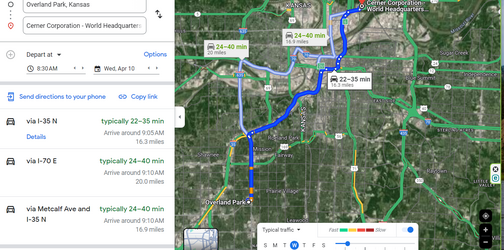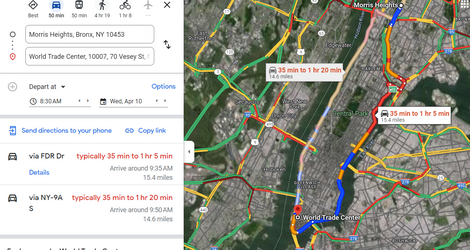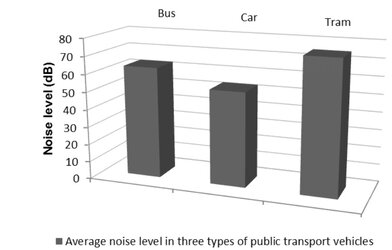- Joined
- Jun 12, 2020
These points in conjunction are only true if the there is high ridership, a simple public transit route, and bad traffic.
- public transit allows people to move around a city efficiently -> this benefits economy
- fewer traffic jams -> saved time -> better for economy
High ridership has already been addressed so I will focus on a simple route and bad traffic. Just adding in one transfer with a 10 waiting period can make taking the rail inefficient. Regarding traffic, this really does depend on the city itself.
As an example, I grew up in Overland Park, KS and a major employer in the area is Cerner. Yet, at 0830 when traffic should be at its worst, Google does not indicate any significant traffic.

Even if traffic is bad, taking public transit can take just as long as a car. The example below is the travel time in one of the most congested cities in the US, NYC to its public transit system. As you can see both private car travel and public transit have the same amount of travel time.

I even steelmanned the Fuck Cars position by using the metro station as the origin point.
Who is building this infrastructure? Highways don't really count as they are for regional travel. They could mean developers but the parking spaces generate economic activity too.
- no need to build massive car infrastructure in a city
At best, you get marginally more space with narrower streets.
- more space for businesses and housing
Perhaps I could drive to the gym in the morning and get a good run in , then head over to my job. I can either jog three miles, get some steps in at work, then go home to walk my dogs or I could be sitting on a train.
- more space for sport activities -> save money on healthcare
Trains and trollies are plenty noisy. I have addressed this a few pagers ago.
- less pollution and noise -> save money on healthcare

Gas taxes pay for this maintenance. With less driving you get less taxes as such, their would be bot large surplus instead it should be parity.
- save money on road maintenance




















